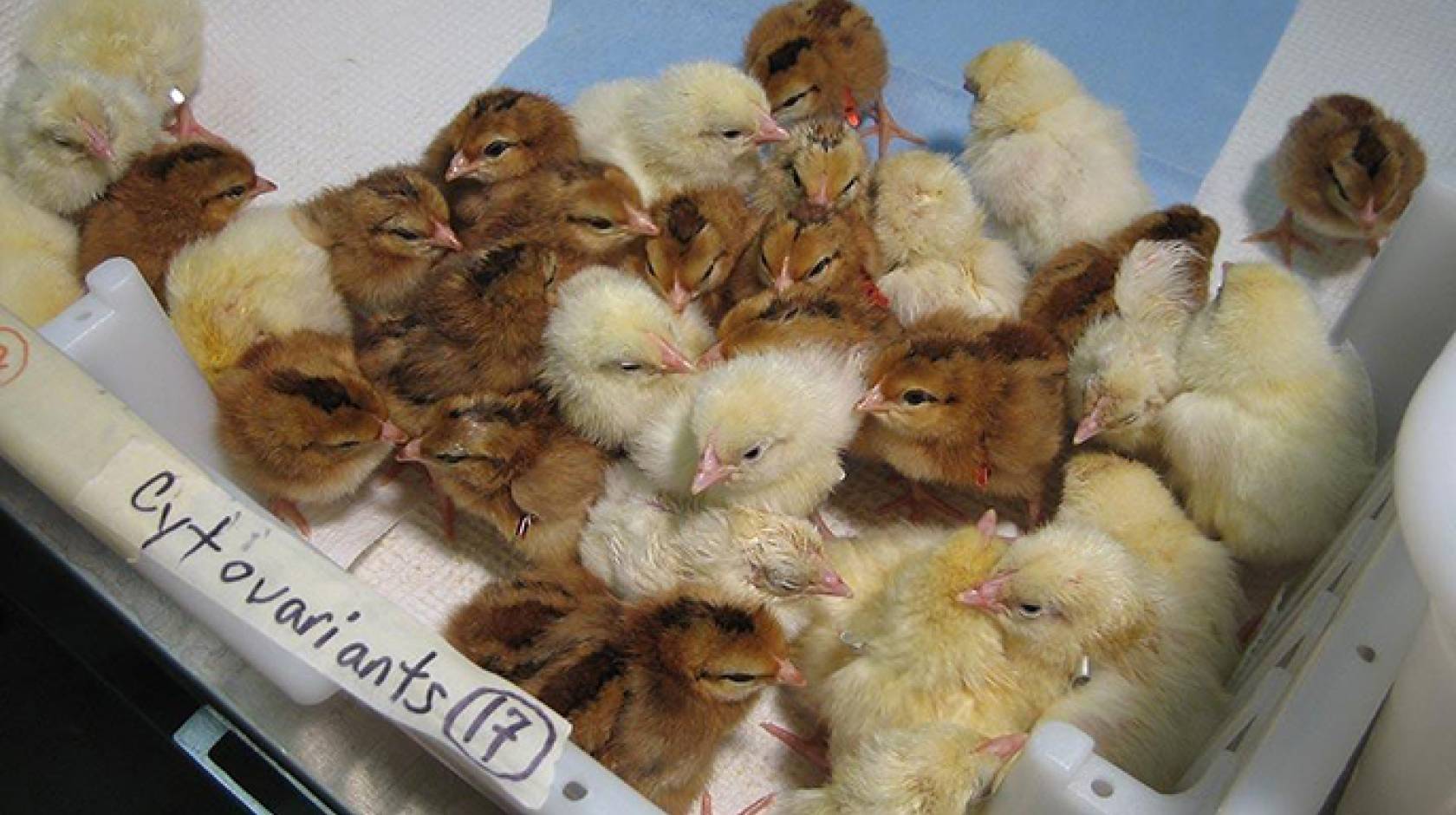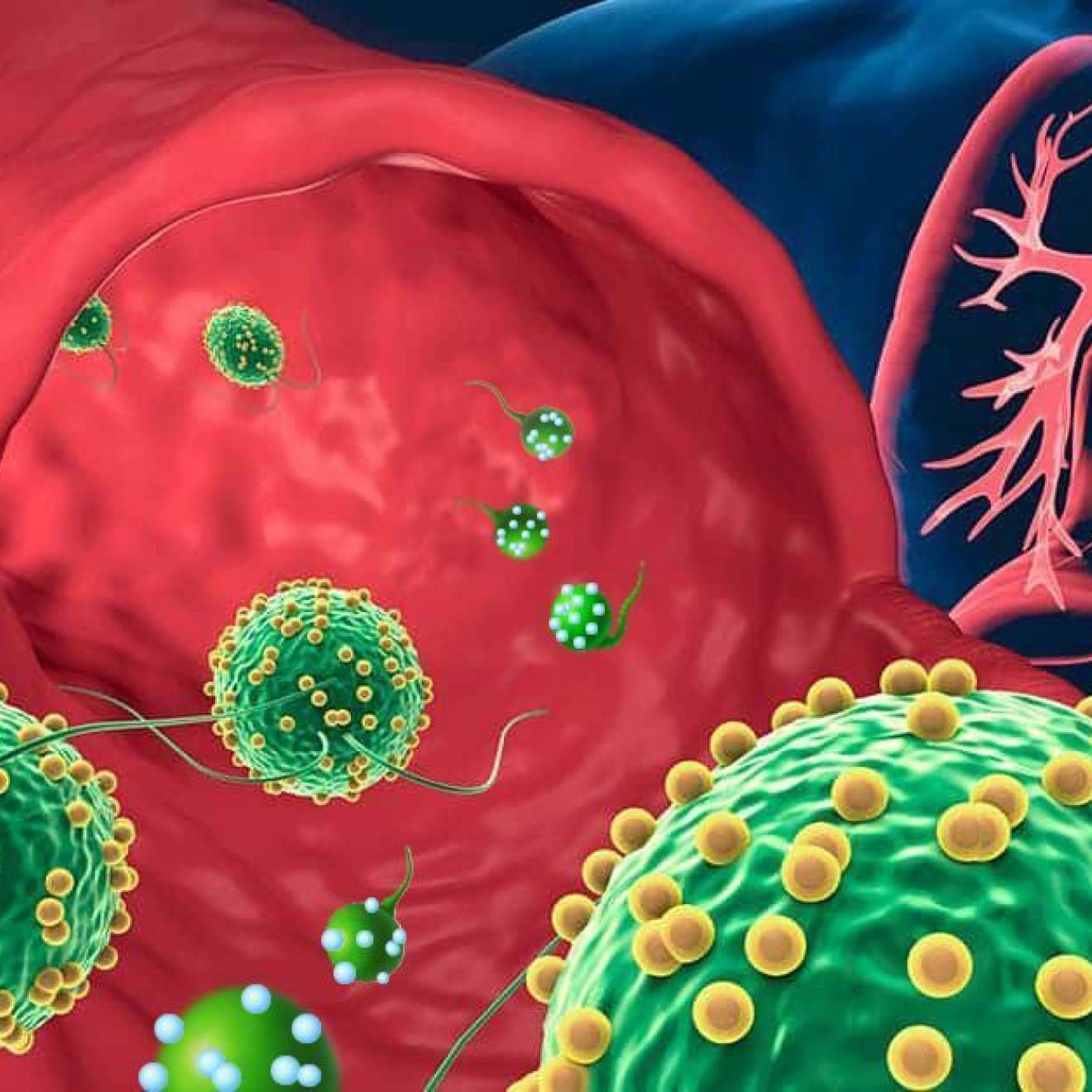Pat Bailey, UC Davis

A new study from University of California, Davis, and the U.S. Department of Agriculture describes how vaccines work against a deadly virus in chickens, and could offer a model for related human diseases such as chickenpox.
The study, published and highlighted in the November issue of the journal Vaccine, describes how three common vaccines for Marek’s disease, a deadly herpesvirus disease in chickens, insert themselves into the chicken’s chromosomes.
Herpesviruses in animals and humans have developed a number of strategies to evade the immune system and persist for later infection.
“One of the key questions surrounding herpesviruses in animals and humans is how do these viruses go latent and where do they ‘hide out’ in cells of the body during a latent period, with the opportunity to re-emerge later,” said Mary Delany, a professor of animal science and a noted poultry geneticist.
“For example, the virus that causes chickenpox in children can seem to go away only to reappear years later as a painful case of shingles in the adult,” Delany said.
In earlier work, Delany and colleagues showed that the Marek’s disease herpesvirus integrates into the chicken’s DNA, and the timing of that is associated with the timing of viral latency. This apparent strategy for evading the immune system allows the virus to persist in the cells of the host, with the potential for later re-emergence causing infectious cycles.
Marek’s disease is largely controlled by vaccination with related strains of the virus, which prime the immune system to defend against the disease virus but do not cause disease themselves.
“In this recent study, we were quite surprised to find that Marek’s vaccines also integrate into the host’s chromosome just as the disease-causing virus does,” Delany said.
She noted that the chicken-based study has tremendous biomedical and economic implications, given that the chicken is one of the major sources of meat, as well as eggs, for much of the world. The United Nations’ Food and Agriculture Organization estimates that 59 billion chickens were used for food production in 2010.
About Marek’s disease
Marek’s disease, first described in 1907, is a highly contagious herpesvirus disease, which in chickens causes recurrent infections and tumors within and among the organ systems.
Like other herpesviruses, the Marek’s disease virus can transition from an active infection stage to a temporary latent stage. This enables the virus to evade the chicken’s defensive immune system and re-emerge later.
Vaccines key to controlling Marek’s
Marek’s disease can be managed by selectively breeding for chickens with increased genetic resistance to the virus; however vaccination is the predominant and most efficient method used to control, although not eradicate, the disease in commercial and even backyard chicken flocks.
The vaccines are prepared from related, weakened strains of the Marek’s disease virus. Although they don’t prevent infection, they do interfere with tumor formation and so prevent death in infected chickens.
However, even after 40 years of vaccinating chickens against Marek’s disease, the exact mechanisms by which vaccines create immunity against the disease have not been clearly understood.
In response to the vaccination, Marek’s disease has evolved to ever more virulent forms. Better understanding of vaccine mechanisms should lead to development of improved vaccines.
Vaccines may lie low to provide lasting protection
In this study, the researchers monitored chicks that had each been vaccinated with one of three commonly used vaccines, as well as a control group of chicks that had not been vaccinated.
They found that all three of the vaccine strains that were tested quickly integrated into the chicken genome, which is characteristic of virulent viruses. The chromosomal integration happened as early as one day after the chicks were vaccinated
“It was completely unexpected that the vaccines would behave similarly to the disease-causing virus with regard to their interactions with the chicken genome,” Delany said. “And it was especially interesting that all three of these vaccines share the capacity to integrate into the genome, even though each shares different features with the Marek’s disease virus.”
She added that it is now important to determine whether the vaccines can re-emerge from their sites in the host genome to allow for long-lasting protection.
Her research group is now studying whether the vaccines may provide protection by out-competing the virus for location in the host’s genome, perhaps preventing latency and the creation of the specific cell population that can be transformed into deadly cancerous conditions.
“We need to find out whether genomic integration of the vaccine offers protection because it competes with integration of the disease-causing virus or if the vaccine’s integration into the genome is simply an evolutionary relic that has no real function in protecting the bird,” Delany said.
Collaborators and funding
Collaborating on the study with Delany were lead author Marla C. McPherson, a doctoral candidate at UC Davis, and Hans H. Cheng of the USDA Avian Disease and Oncology Laboratory in East Lansing, Michigan.
Funding for the study was provided by the U.S. Department of Agriculture’s National Institute of Food and Agriculture.

